#Willard Robertson
Text
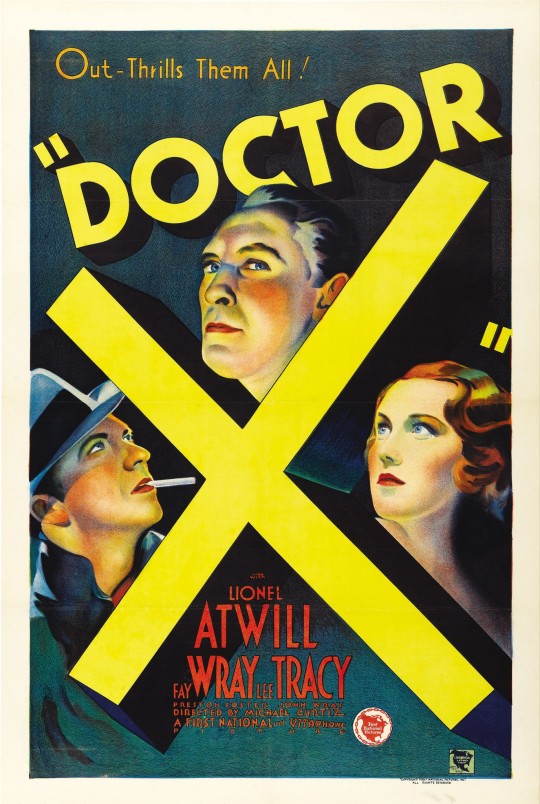
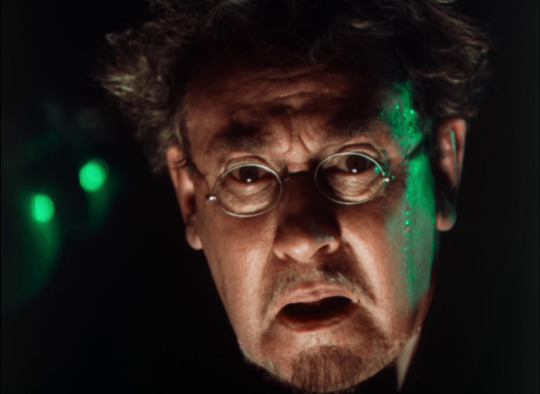
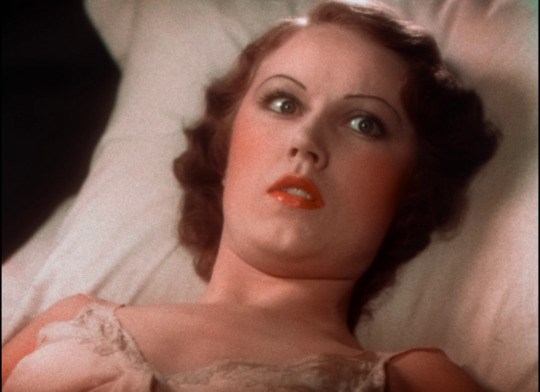

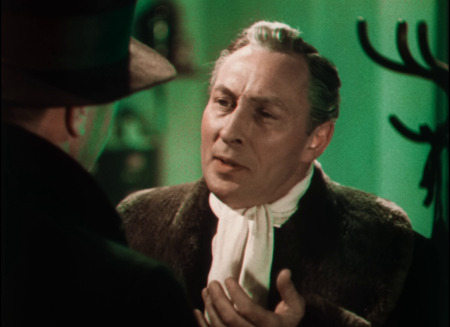
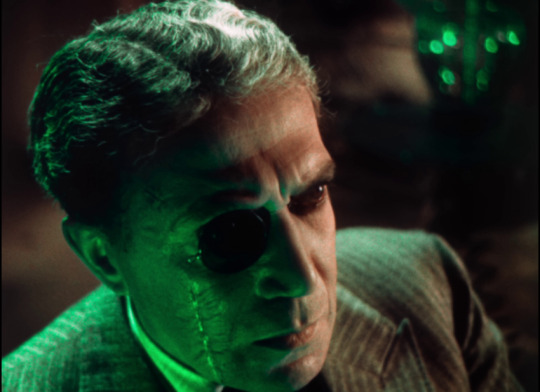
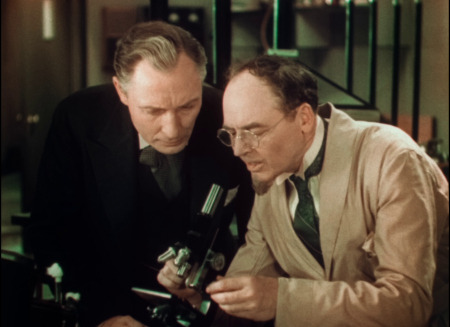



Doctor X (1932)
"If you ask me, I think Dr. Xavier is using very unethical methods."
"Necessity has no ethics, sir."
#doctor x#1932#american cinema#pre code film#horror film#michael curtiz#robert tasker#earl baldwin#howard warren comstock#allen c. miller#lionel atwill#fay wray#lee tracy#preston foster#john wray#harry beresford#arthur edmund carewe#leila bennett#robert warwick#george rosener#willard robertson#solid good time pre code horror (and another off the Rocky Horror list; actually this could be the last i had to see?) (also contrary to#the lyrics of Science Fiction/Double Feature‚ at no point does the titular Dr build 'a creature') but yeah anywa#anyway*‚ this was one of a very few films made with a pioneering two tone technicolor process that was quickly abandoned in the face of#public apathy; once considered a lost film‚ that version was found in the 80s and is now happily available in a beautiful restoration and i#gotta say it looks absolutely phenomenal‚ full of deep‚ ominous greens and purples. the plot is some hokum about a string of murders#possibly involving the good Dr (an as always impeccable Atwill‚ at the beginning of his all too brief run as a star) and his rogues gallery#of weirdy scientific associates. it's par for the course for early horror cinema‚ complete with mildly exasperating comic foil hero (but by#far not the worst example of the type) and some rather risqué dialogue that absolutely wouldn't have got past the code a few years on#could have done with more focus on the horror and less on the funny business but so it goes and at least the laboratory stuff looks amazing
14 notes
·
View notes
Text

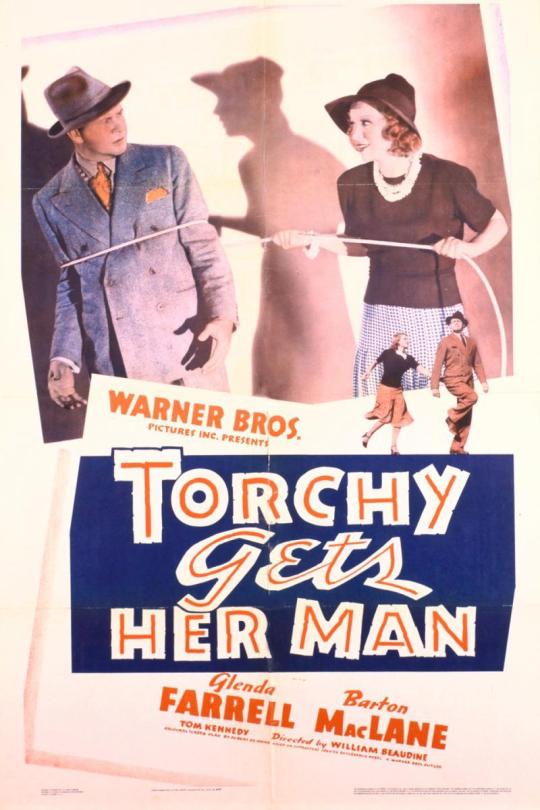
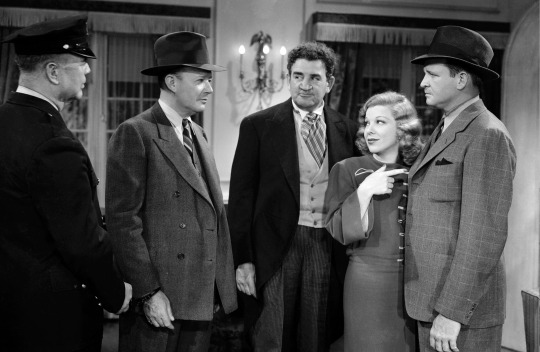

Torchy Gets Her Man (1938) William Beaudine
December 20th 2023
#torchy gets her man#1938#william beaudine#glenda farrell#barton maclane#tom kennedy#willard robertson#thomas e. jackson#frank reicher#nat carr#torchy blane
4 notes
·
View notes
Text

This film was really hard to find, but I finally did it! I had fairly low expectations of Skippy, but it’s actually not that bad. Skippy received the Oscar for Best Director for Norman Taurog.
#the academy awards#the oscars#oscars#skippy#jackie cooper#Robert coogan#Mitzi green#Willard Robertson#norman taurog#1931#theoscarchallenge
3 notes
·
View notes
Photo



Gambling Lady (Archie Mayo, 1934)
Cast: Barbara Stanwyck, Joel McCrea, Pat O'Brien, C. Aubrey Smith, Claire Dodd, Robert Barrat, Arthur Vinton, Phillip Reed, Philip Faversham, Robert Elliott, Ferdinand Gottschalk, Willard Robertson, Huey White. Screenplay: Ralph Block, Doris Malloy. Cinematography: George Barnes. Art direction: Anton Grot. Film editing: Harold McLernon. Music: Bernhard Kaun. Costume design: Orry-Kelly.
Barbara Stanwyck is invariably the best reason to watch any of her movies, and never more so than in Gambling Lady. Oh, her supporting cast is just fine: Joel McCrea is her reliable leading man and Claire Dodd makes the most of her rich-bitch foe. And the story, though familiar enough in its outlines and predictable enough in its resolution, keeps your attention, partly because the Production Code hadn't yet put a choke hold on depictions of the seamier side of life. Stanwyck plays Jennifer "Lady" Lee, an honest woman in a shady milieu: She's a professional gambler who refuses to cheat. It's a familiar Stanwyck character: tough but vulnerable, and she gets many chances to show both sides throughout the film. Her best moment, perhaps, comes at the film's climax, when the rich bitch triumphs, forcing Lady to lie to save McCrea's character, the wealthy Garry Madison, whom Lady has married, from jail. So we get Stanwyck putting on a façade of cynical laughter as she pretends she has never really loved Madison but was just in it for the money. We who know the truth can see the tears welling up inside Lady, but Stanwyck successfully keeps up the front before she makes her exit and collapses in grief. This is screen acting at its best, so that even if the plotting is contrived and the situation trite, Stanwyck wins us over, making more of the scene, in fact of the whole movie, than it really deserves.
32 notes
·
View notes
Text
It’s the 1970s and San Diego anchorman Ron Burgundy is the top dog in local TV, but that’s all about to change when ambitious reporter Veronica Corningstone arrives as a new employee at his station.
Credits: TheMovieDb.
Film Cast:
Ron Burgundy: Will Ferrell
Veronica Corningstone: Christina Applegate
Brian Fantana: Paul Rudd
Brick Tamland: Steve Carell
Champ Kind: David Koechner
Ed Harken: Fred Willard
Garth Holliday: Chris Parnell
Helen: Kathryn Hahn
Tino: Fred Armisen
Eager Cameraman: Seth Rogen
MC: Paul F. Tompkins
Bartender: Danny Trejo
Waiter at Tino’s: Scot Robinson
Stage Manager: Ian Roberts
Hot Blonde: Darcy Donavan
Petite Brunette: Renee Weldon
Tino’s Bassist: Jerry Minor
Director: Holmes Osborne
Security Guard: Charles Walker
Biker Guy: Thomas E. Mastrolia
Eyewitness News Member: Jay Johnston
Man in Kitchen: Peter A. Hulne
Donna: Laura Kightlinger
Custodian: Adam McKay
Custodian: Joseph T. Mastrolia
News Station Employee: Judd Apatow
News Station Employee: Debra McGuire
Network Reporter: Kent Shocknek
Yelling Woman: Monique McIntyre
Bum: Bob Rummler
Announcer: Chuck Poynter
Middle Class Mother: Esmerelda McQuillan
Elderly Woman: Angela Grillo
Wealthy Family Father: Lionel Allen
Wealthy Family Mother: Trina D. Johnson
Doctor: Fred Dresch
Middle Class Dad: Glen Hambly
Nursing Room Resident: Stuart Gold
Bill Lawson – Narrator (voice): Bill Kurtis
Motorcyclist: Jack Black
Arturo Mendes: Ben Stiller
Frank Vitchard: Luke Wilson
Frank the Bartender (uncredited): Frank Gorgie
Zoo Keeper (uncredited): Missi Pyle
Public TV News Anchor (uncredited): Tim Robbins
Wes Mantooth (uncredited): Vince Vaughn
Man in Bar (uncredited): Jerry Stiller
Secretary (uncredited): Holly Traister
Zoologist with Panda in Doug or Glen scene (uncredited): Matthew Vlahakis
Reporter / Anchor (uncredited): Richard Yett
Film Crew:
Supervising Sound Editor: Mark A. Mangini
Casting: Jeanne McCarthy
Sound Effects Editor: Richard L. Anderson
Stunts: Jack Gill
Hair Department Head: Toni-Ann Walker
Location Manager: Jeremy Alter
Casting: Juel Bestrop
Set Decoration: Jan Pascale
Music Editor: Ellen Segal
Writer: Will Ferrell
Executive Producer: David O. Russell
Art Direction: Virginia Randolph-Weaver
Set Designer: Sally Thornton
Director of Photography: Thomas E. Ackerman
Music: Alex Wurman
Producer: Judd Apatow
Executive Producer: Shauna Robertson
Editor: Brent White
Costume Design: Debra McGuire
Stunts: Joe Bucaro III
Production Design: Clayton R. Hartley
Writer: Adam McKay
Co-Producer: David B. Householter
Casting: Blythe Cappello
Second Assistant Director: Basil Grillo
First Assistant Director: Matt Rebenkoff
Second Unit Director: Rick Avery
Construction Coordinator: John R. Elliott
Foley Artist: Joan Rowe
Foley Artist: Sean Rowe
Stunt Double: Sophia M. Crawford
Property Master: Scott Maginnis
Color Timer: David Orr
Makeup Department Head: Kimberly Greene
Script Supervisor: Rebecca Asher
Sound Effects Editor: Mike Chock
Sound Effects Editor: Donald Flick
Key Hair Stylist: Joy Zapata
Dialogue Editor: Ralph Osborn
Sound Effects Editor: Piero Mura
Set Designer: Randall D. Wilkins
Set Designer: Barbara Mesney
Still Photographer: Frank Masi
Visual Effects Supervisor: Ray McIntyre Jr.
Key Grip: Lloyd Moriarity
Leadman: Louise Del Araujo
Production Supervisor: Diane L. Sabatini
Video Assist Operator: Paul Murphey
Dialogue Editor: Thomas Jones
Transportation Coordinator: Michael Menapace
CG Supervisor: David Alexander Smith
Dialogue Editor: Solange S. Schwalbe
Digital Effects Supervisor: Reid Paul
Still Photographer: Darren Michaels
Additional Editing: Melissa Bretherton
Art Department Coordinator: Jeanne Bueche
Makeup Artist: Erin Wooldridge
Music Editor: Erica Weis
Visual Effects Supervisor: Richard R. Hoover
Production Sound Mixer: Jim Stuebe
First Assistant Camera: Baird Steptoe
“A” Camera Operator: Harry K. Garvin
Orchestrator: Tom Calderaro
Visual Effects Producer: Diana Stulic Ibanez
Stunts: Lisa Hoyle
ADR Mixer: Jeff Gomillion
“B” Camera Operator: Steven Hiller
Stunts: Joni Avery
Sound Recordist: Philip Rogers
Assistant Art Di...
#1970s#aftercreditsstinger#battle of the sexes#duringcreditsstinger#gang warfare#journalism#Ladder#misogynist#mustache#news spoof#panda#screwball comedy#sexism#teleprompter#Top Rated Movies#tv show in film
0 notes
Text
Maritime Films #4
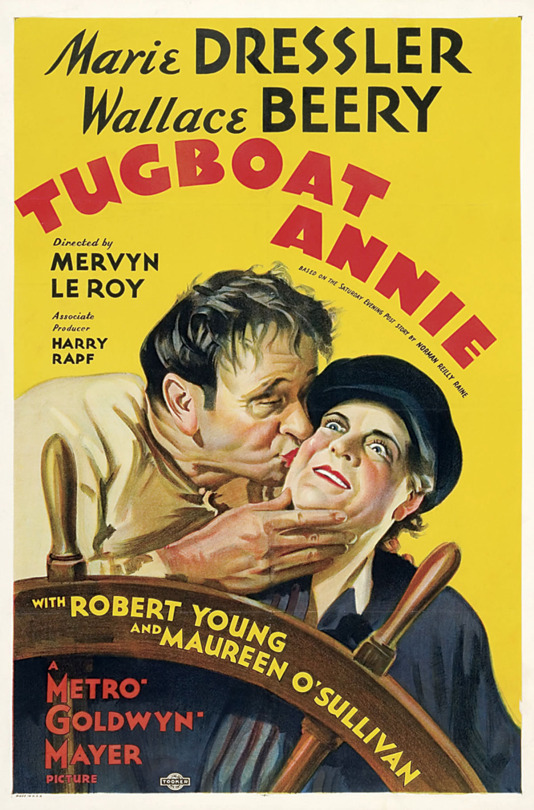
Tugboat Annie (1933)
Directed by: Mervyn LeRoy
Starring: Marie Dressler, Wallace Beery, Robert Young, Maureen O’Sullivan, and Willard Robertson
Guess what? Marie Dressler is the GOAT. I absolutely adore her, and knew going into this 1933 comedy I was going to love it because she is in it. And the film (and Marie) did not disappoint!
In this romp, Marie plays Annie, the skilled captain of her beloved tugboat, Narcissus, the rather impatient wife to her drunken lout of a husband, Terry (Beery), and the proud and doting mother to her ambitious son, Alec (Young). Annie’s days are happily spent tugging ships in and out of Puget Sound, and making sure Terry doesn’t get into too much trouble. But things change for her when Alec comes home, the captain of a snazzy and swanky ocean liner, and engaged to his childhood playmate, Pat (O’Sullivan).
Annie is prouder than ever of her successful son, but Alec is weary of his father’s drunken escapades, and the strain his lifestyle is putting on his wife. Alec encourages Annie to give up the Narcissus and leave Puget Sound, an offer made all the more tantalizing when one of Beery’s drunken episodes results in the Narcissus getting repossessed by a rival tugboat company owned by Severn (Robertson). But, will Annie leave her husband - a lout he may be but the only one who has captured her heart - and her beloved tugboat life forever?
This movie was pure fun from start to finish. Not only was Dressler amazing, as expected, but Beery was her comedic equal in every scene. I know the two worked together a few times, and it is obvious why: they have amazing chemistry, and know how to ham it up with each other in truly delightful ways.
I also enjoyed the slant of this movie in portraying life aboard an ocean liner as elite, exquisite, and snobbish, and the achievement of merchant marine captain as an envious accomplishment, while working the tugboat service is salty, coarse, rough, and low-brow. An interesting social commentary on the class system of maritime life...
But, on the whole, I couldn’t recommend this one enough! 3 out of 3 masts!
0 notes
Photo






Doctor X | Michael Curtiz | 1932
Robert Warwick, Willard Robertson, Lionel Atwill, et al.
17 notes
·
View notes
Text

A man in a million movies, character actor Willard Robertson.
4 notes
·
View notes
Text

The Ox Box Incident 1943
#the ox bow incident#henry fonda#harry morgan#dana andrews#anthony quinn#mary beth hughes#william eythe#jane darwell#matt briggs#harry davenport#frank conroy#marc lawrence#paul hurst#george meeker#frank mcgrath#victor kilian#willard robertson#stanley andrews#tex driscoll#hank bell#tex cooper#francis ford#margaret hamilton#tom london#george lloyd#rondo hatton#frank orth#dick rich#walt robbins
26 notes
·
View notes
Photo

Bad movie I have Roman Scandals 1933 This has Eddie Cantor in Black Face
#Roman Scandals#Samuel Goldwyn Company#Eddie Cantor#Ruth Etting#Gloria Stuart#Edward Arnold#David Manners#Verree Teasdale#Alan Mowbray#Jack Rutherford#Willard Robertson#Lee Kohlmar#Richard Alexander#Lucille Ball#Bonnie Bannon#Myrla Bratton#Dolores Casey#Rosaline Fromson#June Gale#Paulette Goddard#Jane Hamilton#Philippa Hilber#Vivian Keefer#Mary Lange#Katharine Mauk#Iris Meredith#Barbara Pepper#Grace Poggi#Helen Wood#Mildred Shay
7 notes
·
View notes
Photo


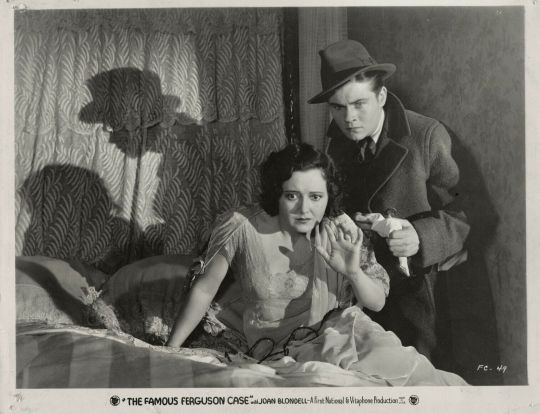
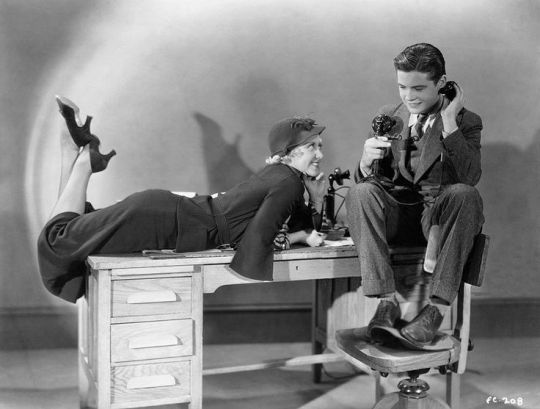

The Famous Ferguson Case (1932) Lloyd Bacon
December 31st 2022
#the famous ferguson case#1932#lloyd bacon#joan blondell#tom brown#kenneth thomson#adrienne dore#leslie fenton#grant mitchell#clarence wilson#vivienne osborne#willard robertson#george meeker#leon ames#pre-code
4 notes
·
View notes
Text
I Am a Fugitive from a Chain Gang / Prangalı Hapishane Kaçağıyım
I Am a Fugitive from a Chain Gang / Prangalı Hapishane Kaçağıyım

Sinemaya kendi içinde bir derya diyenler az demişler, bence sinema koca evrenin koca bir yansıması gibi düşünülmeli. Yok, yok içinde, arasanız da, aramasanız da bir gün karşınıza böylesi sürprizler çıkıveriyor. Hem de 1932 yılında yapılmış bir film. Toplumsal gerçekçi güçlü izler mi dersiniz, sistem eleştirisi mi, sinema tekniği mi, oyunculuk mu? Ne derseniz deyin, hepsinden bolca, yeteri kadar,…
View On WordPress
#Allen Jenkins#Berton Churchill#David Landau#Edward Ellis#Glenda Farrell#Hale Hamilton#Helen Vinson#I Am a Fugitive from a Chain Gang#John Wray#Louise Carter#Mervyn LeRoy#Noel Francis#Paul Muni#Prangalı Hapishane Kaçağıyım#Preston Foster#Robert McWade#Robert Warwick#Sally Blane#Süleyman Deveci#Willard Robertson
1 note
·
View note
Text

Lionel Atwill in Doctor X (Michael Curtiz, 1932)
Cast: Lionel Atwill, Fay Wray, Lee Tracy, Preston Foster, John Wray, Harry Beresford, Arthur Edmund Carewe, Leila Bennett, Robert Warwick, George Rosener, Willard Robertson, Thomas E. Jackson, Harry Holman, Mae Busch, Tom Dugan. Screenplay: Robert Taskner, Earl Baldwin, based on a play by Howard Warren Comstock and Allen C. Miller. Cinematography: Ray Rennahan. Art direction: Anton Grot. Film editing: George Amy.
In Doctor X, Lee Tracy is called on to do two incompatible things: serve as comic relief and play the romantic lead. He succeeds at the former more than he does at the latter, which is not saying much. (The comic shtick involves things like joy buzzers and exploding cigars, which gives you a sense of the level of humor Tracy is asked to participate in.) The film is a whodunit horror about a serial killer who strikes at the full moon and who leaves his victims mutilated. (The movie calls it cannibalism, but I don't recall any evidence that the killer actually ate the people he murdered.) The chief forensic clue is that the victims were sliced up with a particular kind of scalpel, used only by one facility in the city: a research institute headed by Dr. Jerry Xavier (Lionel Atwill). When the police detectives call on Xavier, they are introduced to his research staff, each of whom becomes a suspect in the killings. Meanwhile, Lee Taylor (Tracy), one of those anything-for-a-story reporters Hollywood was fond of, is snooping around too, trying to uncover the Full Moon Killer before the police do. This involves Taylor breaking and entering at not only the institute but also Dr. Xavier's creepy gothic mansion on a cliff in Long Island, where he lurks around in some skeleton-filled closets. (Cue the obvious gags.) He also meets Dr. Xavier's lovely daughter, Joanne (Fay Wray), and they inexplicably (at least where she's concerned) hit it off. Naturally, Joanne has to be put in jeopardy and Taylor has to rescue her. Doctor X is mostly remembered for its experiment with two-strip Technicolor, which yields some interesting if washed-out looking images, but also seems inappropriate for the film's sinister old dark house setting. There are a few nice scares among all the goofiness and pseudo-scientific poppycock -- the usual foaming and smoking beakers and flasks and some sparking and arcing electric apparatus -- but in a golden age for horror movies, Doctor X is decidedly second-tier.
0 notes
Text
Books Read in 2021
1. The Boy, the Mole, the Fox and the Horse by Charlie Mackesy
2. My Lovely Wife by Samantha Downing
3. Maybe This Time by Kasie West
4. Cold-Case Christianity by J. Warner Wallace
5. Carve the Mark by Veronica Roth
6. The Fates Divide by Veronica Roth
7. The Enneagram Type 2 by Beth McCord
8. Jane Eyre by Charlotte Brontë
9. Trade Your Cares for Calm by Max Lucado
10. Everybody, Always by Bob Goff
11. Villette by Charlotte Brontë
12. Dream Big by Bob Goff
13. Chasing Lucky by Jenn Bennett
14. The Girl on the Train by Paula Hawkins
15. The Light We Lost by Jill Santopolo
16. The Attentive Life by Leighton Ford
17. I’ll Go Home Then, It’s Warm and Has Chairs by David Thorne
18. A Vow So Bold and Deadly by Brigid Kemmerer
19. Killing November - Adriana Mather
20. The Problem of Pain - C.S. Lewis
21. Hunting November - Adriana Mather
22. You’ll Get Through This - Max Lucado
23. The Boy Who Followed His Father into Auschwitz - Jeremy Dronfield
24. The 5 Love Languages of Children - Gary Chapman & Ross Campbell
25. Always Never Yours - Emily Wibberly
26. The Stranger Inside - Lisa Unger
27. The Inheritance Games - Jennifer Lynn Barnes
28. Be the Bridge - LaTasha Morrison
29. The Pieces of Ourselves - Maggie Harcourt
30. Something in the Water - Catherine Steadman
31. A Beautiful Day in the Neighbourhood - Fred Rogers
32. The Thursday Murder Club - Richard Osman
33. Live Fearless - Sadie Robertson
34. The More of Less - Joshua Becker
35. Daisy Jones & The Six - Taylor Jenkins Reid
36. Anna and the French Kiss - Stephanie Perkins
37. The Flight Girls - Noelle Salazar
38. The Woman in the Window - A.J. Finn
39. Gentle and Lowly - Dane Ortlund
40. The Spirit of the Disciplines - Dallas Willard (read 56% then quit)
41. Nine Perfect Strangers - Liane Moriarty
42. Throw Like a Girl - Sarah Henning
43. The Last Summer of Us - Maggie Harcourt
44. The Seven Husbands of Evelyn Hugo - Taylor Jenkins Reid
45. How Happiness Happens - Max Lucado
46. A Darker Shade of Magic - V.E. Schwab
47. A Gathering of Shadows - V.E. Schwab
48. A Conjuring of Light - V.E. Schwab
49. Hunt, Gather, Parent - Michaeleen Doucleff
50. Malibu Rising - Taylor Jenkins Reid
51. The Last Letter From Your Lover - Jojo Moyes
52. The Road Back to You - Ian Morgan Crone & Suzanne Stabile
53. August and Everything After - Jennifer Salvato Doktorski
54. You Have a Match - Emma Lord
55. The Guest List - Lucy Foley
56. Jesus - Max Lucado
57. Field Notes on Love - Jennifer E. Smith
58. Rhythms of Renewal - Rebekah Lyons
59. The Book of Two Ways - Jodi Picoult
60. The Firekeeper’s Daughter - Angeline Boulley
61. My Life with the Walter Boys - Ali Novak
62. The Enneagram of Belonging - Christopher L. Heuertz
63. The Chain - Adrian McKinty
64. The Nickel Boys - Colson Whitehead
65. Satisfied - Alyssa Joy Bethke
66. Say You’ll Remember Me - Katie McGarry
67. The Strange and Beautiful Sorrows of Ava Lavender - Leslye Walton
68. Girl Defined - Kristen Clark & Bethany Baird
69. The Seven Deaths of Evelyn Hardcastle - Stuart Turton
70. The Alice Network - Kate Quinn
71. Such a Fun Age - Kiley Reid
72. Why Suffering - Ravi Zacharias & Vince Vitale
73. 5 Love Languages Singles Edition - Gary Chapman
74. The Final Girls Support Group - Grady Hendrix
75. The Hawthorne Legacy - Jennifer Lynn Barnes
76. More Than We Can Tell - Brigid Kemmerer
77. Confessions on the 7:45 - Lisa Unger
78. The Good Neighbor: The Life and Work of Fred Rogers - Maxwell King
79. Truly Devious - Maureen Johnson
80. The Meaning of Marriage - Timothy & Kathy Keller
81. The Vanishing Stair - Maureen Johnson
82. The Hand on the Wall - Maureen Johnson
83. The Box in the Woods - Maureen Johnson
84. Animal Farm - George Orwell
85. Alex, Approximately - Jenn Bennett
86. Live No Lies - John Mark Comer
87. God and the Pandemic - N.T. Wright
88. The Secret History - Donna Tartt
89. Peter Pan and Wendy - J.M. Barrie
90. One Day in December - Josie Silver
91. Daring to Hope - Katie Davis Majors
92. The Man Who Died Twice - Richard Osman
93. Hercule Poirot’s Christmas - Agatha Christie
94. A Castle in the Clouds - Kerstin Gier
95. Take Back Your Family - Jefferson Bethke
4 notes
·
View notes
Text
Radix Dance Convention, Atlanta, GA: RESULTS
High Scores by Age:
Rookie Solo
1st: MIla Simunic-’Never Enough’
2nd: Brenna Ferrell-’Showstopper’
2nd: Alaina Chadbourne-’Walk The Dinosaur’
Mini Solo
1st: Ellie Melchior-’Function’
2nd: Barrett Robison-’Ping’
3rd: Spencer Parnell-’The Return’
3rd: AnaKate Danner-’Unleashed’
3rd: Paislyn Schroeder-’Vibin’
4th: Kaylee Schwamb-’See Me Now’
4th: Lily Planck-’She’s A Lady’
5th: Georgia Beth Peters-’Come Together’
5th: Ava Grace Merritt-’Love Me’
5th: Anslee LeBlanc-’Take Care Of Yourself’
6th: Bella Smith-’Against The Music’
6th: Clare Gibbons-’Baby I’m A Star’
7th: Xin Lee-’Finding Home’
7th: Avery St John-’Tomorrow’s Song’
8th: Londyn Knox-’Without You’
9th: Lauren Fenton-’Boogie Shoes’
9th: Madelyn Laken-’Surprise’
10th: Penelope Thomas-’Love Shack’
10th: Lila Morath-’Miss Velour’
Junior Solo
1st: Amaya Llewellyn-’Must’
1st: Leila Winker-’Takt’
2nd: Emme James Anderson-’Resume’
3rd: Riley Fiorello-’Crippled Bird’
3rd: Estella Guzman-’No Contamination’
3rd: Ally Reuter-’Stagma’
4th: Mia Doyle-’Designated Harmony’
4th: Brinkley Pittman-’Gravity’
4th: Addison Cullather-’Tangent’
5th: Morgan Belyeu-’Older’
5th: Kalli Ramet-’Rock Me Baby’
5th: Roberta Marcos-’Torn’
6th: Luna Powell-’1977′
6th: Ella Paige Moore-’Breaking Point’
6th: Zella Wentz-’Fearless’
7th: Addison ?-’How Does A Moment Last Forever’
7th: Collier McLain-’Love Has No Limits’
7th: Mia Mondok-’Music Box’
7th: Gabriela Miller-’Sinking’
8th: Mia Narvaez-’Destinations’
8th: Amanda Fenton-’Devil In Disguise’
8th: Annabel Ellis-’The Forest’
8th: Sidney Hill-’The Moon’
9th: Zoe Kappler-’Changeling’
9th: Callie Ludtke-’Impossible’
9th: Leah Midgett-’Mirror Mirror’
10th: Kinley Andrews-’All That Jazz’
10th: Meredith Lee-’Especially A Woman’
Teen Solo
1st: Harlow Ganz-’End of Love’
1st: Preslie Rosamond-’Possibly Maybe’
2nd: Emery Sousley-’Birds of Paradise’
3rd: Olivia Taylor-’Closure’
3rd: Oliver Keane-’Electric Pulse’
4th: Kenzie Robertson-’1977′
4th: Josh Stephens-’Fires’
4th: Johanna Jessen-’Party’
4th: Gabriella Kennedy-’Ritz’
4th: Rianna Weck-’Sensory Overload’
5th: Delaney Lorenz-’Creep’
5th: Haley Midgett-’Smile to Me’
5th: Sydney Tam-’Touch’
6th: Natalie Bumgarner-’Maybe This Time’
6th: Kate Higginbotham-’Polly’
7th: Kennedi Washington-’Epilogue’
7th: Kayla Pierce-’Fire Speak’
7th: Kayla Montgomery-’Lalia’
8th: Cady Cropper-’Godspeed’
8th: Maddie Laine Callaway-’Piece by Piece’
9th: Mia Lott-’Flawless’
9th: Jordan Stevener-’Ghosts’
9th: Ally Organo-’Like You’ll Never See Me Again’
10th: Julia Deana-’Hate You’
10th: Madison marshall-’Icon’
10th: Dempsey Foxson-’Vain’
Senior Solo
1st: Seth Gibson-’Identity’
1st: Dai Boyd-’Try A Little Tenderness’
2nd: Libby Wiley-’By Thy Light’
3rd: Brittany Willard-’Unchained Melody’
4th: Raven Rutledge-’A Pale’
5th: Rebecca Lewyn-’Devil I Know’
5th: Anna Goodman-’Fallen Alien’
5th: Alexandra Jinglov-’Take It Easy’
6th: Belle Mason-’Drones’
6th: Katelynn Midgett-’Georgia’
6th: Ayana Davis-’Progressing’
7th: Kaili Tam-’Malamente’
7th: Elaina Samady-’Loving Ghosts’
7th: Ally Pereira-’Daring to Love’
7th: CJ Parker-’A Letter From France’
7th: Madison Phelps-’A Feeling Felt’
7th: Avery Ferguson-’When You Sleep’
8th: Izzie Bringle-’Hush’
8th: Molly Fisher-’Moved’
8th: Lexi Elias-’The Weight’
9th: Gracie Avalos-’A Body’
9th: Kirsten Brown-’Asylum’
9th: Julia Hale-’Cellophane’
10th: Brooke Manchester-’Go’
10th: Ainsley Wharton-’These hands’
10th: Sophie Hooker-’We’ll Meet Again’
Mini Duo/Trio
1st: Academy for The Performing Arts-’Fall For You’
2nd: Milele Academy-’Miami’
3rd: Studio 413-’Party Planners’
3rd: Milele Academy-’Vibology’
Junior Duo/Trio
1st: Milele Academy-’Fiyah Speak’
1st: Academy for the Performing Arts-’Oceania’
2nd: B-viBe The Dance Movement-’The Mess We’re In’
3rd: Dance Productions Unlimited-’Superpowers’
Teen Duo/Trio
1st: The Royal Dance Academy-’Greiving’
2nd: Milele Academy-’Down We Go’
2nd: Accolades Movement Project-’I Remember Her’
3rd: Studio 413-’Distortion’
3rd: Academy for the Performing Arts-’Fledglings’
3rd: Academy for the Performing Arts-’Rebuild’
3rd: Academy for the Performing Arts-’Tiny Cities’
Senior Duo/Trio
1st: Studio 413-’Black Flies’
2nd: Milele Academy-’Darkest Hour’
3rd: B-viBe The Dance Movement-’Heartbeat’
Rookie Group
1st: Elite Studio-’I Don’t Want to Show Off’
2nd: Elite Studios-’90′s Babies’
Mini Group
1st: Encore Studio-’Uptown Girl’
2nd: Encore Studio-’Windowdipper’
3rd: Encore Studio-’Turn to Stone’
Junior Group
1st: Jill’s Studio of Dance-’All I Want’
1st: B-viBe The Dance Movement-’Down The Line’
1st: B-viBe The Dance Movement-’History In The Making’
2nd: Milele Academy-’Save a Horse’
3rd: Elite Studio-’Collective Breath’
Teen Group
1st: Academy for the Performing Arts-’Don’t Forget Me’
1st: Encore Studio-’Kinjabang’
2nd: Studio 413-’Social Media Overload’
3rd: Milele Academy-’Close Up’
Senior Group
1st: Elite Studios-’I Still Remain’
2nd: Milele Academy-’Get It’
3rd: Academy for the Performing Arts-’Holdin Out’
Rookie Line
1st: Encore Studio-’Conga’
Mini Line
1st: Jill’s Studio of Dance-’Jailhouse Rock’
2nd: Encore Studio-’Truth’
3rd: Elite Studio-’Get Busy’
3rd: Elite Studios-’What You Did To Me’
Junior Line
1st: Milele Academy-’Missy’
2nd: Jill’s Studio of Dance-’It’s About That Walk’
3rd: Studio 413-’Into the Night’
Teen Line
1st: Studio 413-’Hold On Tight’
2nd: Encore Studio-’Yikes’
3rd: Encore Studio-’Just Say’
Senior Line
1st: Studio 413-’Rumors’
2nd: Jill’s Studio of Dance-’Lost’
3rd: Jill’s Studio of Dance-’Who You Are’
Mini Extended Line
1st: Encore Studio-’Vibeology’
2nd: Studio 413-’Critical Level’
3rd: Jill’s Studio of Dance-’I’m Alive’
Junior Extended Line
1st: Jill’s Studio of Dance-’Covergirl’
1st: Jill’s Studio of Dance-’Footloose’
1st: Studio 413-’Goodbye’
2nd: Studio 413-’Girl Boss’
Teen Extended Line
1st: Studio 413-’No One’
2nd: Studio Powers-’BLACK’
3rd: Studio 413-’Ready or Not’
Senior Extended Line
1st: Jill’s Studio of Dance-’Shut It Down’
2nd: Jill’s Studio of Dance-’Trust Me Again’
3rd: Jill’s Studio of Dance-’Resolution’
Junior Production
1st: Studio 413-’Electricity’
Teen Production
1st: Encore Studio-’Cardi’
2nd: Jill’s Studio of Dance-’JLo’
3rd: Elite Studio-’That 70′s Show’
High Scores by Performance Division:
Rookie Jazz
1st: Encore Studio-’Conga’
2nd: Elite Studio-’I Don’t Want to Show Off’
Rookie Tap
Elite Studios-’90′s Babies’
Mini Jazz
1st: Encore Studio-’Uptown Girl’
2nd: Jill’s Studio of Dance-’Jailhouse Rock’
3rd: Milele Academy-’Move Your Body’
Mini Hip-Hop
Studio 413-’Lose Control’
Mini Tap
Studio 413-’Critical Level’
Mini Contemporary
1st: Encore Studio-’Windowdipper’
2nd: Encore Studio-’Turn to Stone’
3rd: Encore Studio-���Truth’
Mini Lyrical
1st: Elite Studios-’Every Single Thing I Have’
2nd: Vermont Ballet Theater-’Build It Up’
Mini Specialty
Jill’s Studio of Dance-’I’m Alive’
Junior Jazz
1st: Jill’s Studio of Dance-’Covergirl’
2nd: Studio 413-’Electricity’
3rd: Milele Academy-’Save a Horse’
3rd: Jill’s Studio of Dance-’It’s About That Walk’
Junior Hip-Hop
1st: Milele Academy-’Missy’
2nd: Studio 413-’Girl Boss’
3rd: Academy for the Performing Arts-’New Skool’
Junior Tap
1st: Studio 413-’Into the Night’
2nd: Academy for the Performing Arts-’You Can Feel It’
Junior Contemporary
1st: Studio 413-’Goodbye’
2nd: B-viBe The Dance Movement-’Down The Line’
3rd: Elite Studio-’Collective Breath’
Junior Lyrical
Jill’s Studio of Dance-’All I Want’
Junior Musical Theatre
1st: Academy for the Performing Arts-’Guns and Ships’
2nd: Vermont Ballet Theater-’We Go Together’
Junior Specialty
1st: Jill’s Studio of Dance-’Footloose’
2nd: B-viBe The Dance Movement-’History In The Making’
Teen Jazz
1st: Encore Studio-’Just Say’
2nd: Studio 413-’Body Language’
3rd: Studio 413-’Social Media Overload’
Teen Hip-Hop
1st: Encore Studio-’Yikes’
2nd: Studio Powers-’BLACK’
3rd: Jill’s Studio of Dance-’Fire Emoji’
Teen Tap
1st: Studio 413-’No One’
2nd: Encore Studio-’Cardi’
Teen Contemporary
1st: Studio 413-’Hold on Tight’
2nd: Encore Studio-’Kinjabang’
2nd: Academy for the Performing Arts-’Don’t Forget Me’
2nd: Encore Studio-’Sadness’
3rd: Milele Academy-’Hurting You’
Teen Lyrical
Vermont Ballet Theater-’Gravity’
Teen Musical Theatre
1st: Elite Studios-’Take Off With Us’
1st: Academy for the Performing Arts-’Wait For Me’
Teen Specialty
1st: B-viBe The Dance Movement-’Cage of Bones’
2nd: Studio Powers-’Area 51′
Senior Jazz
1st: Studio 413-’Rumors’
2nd: Jill’s Studio of Dance-’Shut It Down’
3rd: Elite Studios-’Sleep’
Senior Hip-Hop
Academy for the Performing Arts-’Welcome to Our Hood’
Senior Tap
Academy for the Performing Arts-’Holdin’ Out’
Senior Contemporary
1st: Elite Studios-’I Still Remain’
2nd: Milele Academy-’Get It’
2nd: Jill’s Studio of Dance-’Lost’
3rd: Jill’s Studio of Dance-’Who You Are’
3rd: Jill’s Studio of Dance-’Trust Me Again’
Senior Lyrical
1st: Elite Studios-’Kissing You’
2nd: B-viBe The Dance Movement-’Came Here For Love’
Senior Specialty
1st: Academy for the Performing Arts-’Still Smiling’
2nd: B-viBe The Dance Movement-’For This You Were Born’
Best of Radix:
Rookie
Elite Studio-’I Don’t Want to Show Off’
Encore Studio-’Conga’
Mini
Milele Academy-’Move Your Body’
Jill’s Studio of Dance-’Jailhouse Rock’
Encore Studio-’Uptown Girl’
Junior
Elite Studio-’Collective Breath’
Milele Academy-’Missy’
B-viBe The Dance Movement-’History In The Making’
Studio 413-’Goodbye’
Jill’s Studio of Dance-’Covergirl’
Teen
Academy for the Performing Arts-’Don’t Forget Me’
Studio 413-’Hold On Tight’
Studio Powers-’BLACK’
Milele Academy-’Hurting You’
Jill’s Studio of Dance-’Fire Emoji’
Encore Studio-’Yikes’
Senior
Milele Academy-’Get It’
Elite Studios-’I Still Remain’
Studio 413-’Rumors’
Academy for the Performing Arts-’Holdin Out’
Jill’s Studio of Dance-’Lost’
Studio Standout:
Elite Studios-’I Still Remain’
Academy for the Performing Arts-’Holdin Out’
B-viBe The Dance Movement-’History In The Making’
Encore Studio-’Yikes’
Jill’s Studio of Dance-’Lost’
Milele Academy-’Get It’
Studio 413-’Hold On Tight’
8 notes
·
View notes
Text
TWO ALONE: A Noir Pastoral

It gets darker in the country than in the city.
Urban areas are thought to teem with crime and vice, but for city dwellers used to crowded, well-lit streets there’s a special terror about lonely rural roads at night. To the wary urbanite, the country—while it may be pretty for a Sunday outing—is a place of isolation, ignorance, backwardness and intolerance. This distrust feeds a strain of the rural gothic that trickles through Hollywood movies, always marginal and often subversive. Less common than the swampy, overripe Southern gothic, this genre of bucolic noir portrays farm life as mean, hard-bitten, joyless, and rife with exploitation—less salt-of-the-earth than salt-in-the-wounds.
F.W. Murnau’s City Girl (1929) set the template. Here Murnau inverted the pattern of Sunrise (1928), in which George O’Brien’s restless farmer is corrupted by an immoral city vixen and redeemed by a his wholesome, pure-hearted peasant wife. In City Girl, the eponymous heroine spends her days slinging hash in a Chicago lunch counter, sweating and footsore, batting away passes from endless hordes of male customers. At night she goes home to the roar of the El outside her cramped little room, blows the dust off her pitiful potted flower, listens to the chirping of a mechanical bird toy, and dreams of a better life outside the city. But when she marries a naive farm boy and goes home with him to the wheat fields, she’s briskly disillusioned. She has to contend with her harshly disapproving, bible-thumping father-in-law, who dominates her spineless husband; with a crowd of lecherous hired hands whose leering and pawing are worse than anything at the lunch counter; with thankless toil and her in-laws’ grim obsession with profit.
City Girl was caught in the changeover to sound, made as a silent but released in a mangled form with added musical and dialogue scenes. (The silent version has since been recovered and is now the only version available.) Among the changes that came with the adoption of sound was an intense urbanization of Hollywood’s output. The difficulty of location shooting and the influx of actors and writers from New York may have been the causes, but the whole tone of pre-Code movies is urban: wised-up, fast-paced, slangy.
Even when someone tried to make a film extolling the virtues of rural life, it seems they just couldn’t stop sneering and shuddering. The Purchase Price (1933), a total mis-fire by William Wellman, follows the basic trajectory of City Girl but is made with complete disregard for narrative logic or credibility. Barbara Stanwyck plays a nightclub singer so fed up with life on the Big Street, and with her seemingly amiable racketeer boyfriend, that she decides to flee to North Dakota as a mail-order bride. There she behaves like a brainwashed gulag inmate, cheerfully undergoing her re-education-through-labor: waking at dawn in a room so cold the water in her pitcher is frozen, and slogging through back-breaking toil in support of a churlish ingrate husband. (Played by the charmless George Brent, he pounces on her without preamble on their wedding night, and is so deeply offended by her rejection that he refuses ever to give her a second chance.) Of course, who would want to earn a cushy living warbling a song or two in a silver lamé gown when she could don an unflattering apron and a pair of galoshes and tote heavy pails of water along muddy paths while fending off cretinous rustics and suffering the scorn of a man with a chronic sniffle? Umm....
Somehow I imagine that the men who wrote The Purchase Price (the screenplay was by Warner Brothers regular Robert Lord, having an off day) were about as fond of clean country living as Oscar Levant, whose freak-out upon finding himself on the remote Neshobe Island is memorably recorded in Harpo Marx’s sublime autobiography, Harpo Speaks. He describes how Levant dissolved into panic when dragged off to this idyllic spot: “‘Birds!’ he wailed. ‘There are birds here! The sickest creatures on God’s earth! Trees! Even the trees are psychotic! Bugs! Don’t tell me there aren’t any insects here because I know there are!’ He grabbed my arm. ‘Harpo,’ he said, ‘What have you done to me? Take me away from here. Take me away from here!’”
Rural gothic films succeed where they avoid Purchase Price-style hypocrisy and are unapologetic in their antagonism. The completely unexpected Two Alone (1934) is such a triumph. It is unexpected both because this kind of dark, brooding, romantic, Borzagean tale was out of fashion in 1934, and because no one involved in the film had a distinguished record elsewhere. Director Elliott Nugent started as an unpreposessing actor (he’s the wimpy love interest in the talkie version of The Unholy Three, and had his best role as an emotionally damaged ex-pilot in The Last Flight) and as a director churned out mainly lightweight fare and earnest mediocrities like the 1949 Great Gatsby. The cast is headed by bland B leads—lovely Jean Parker, whose acting is rudimentary, and perennial kid-brother Tom Brown—and by a crew of usually predictable character actors. But nothing about this film is predictable.
It opens with barnyard footage that prepares you for a quaint rustic comedy (an expectation encouraged by the presence of ZaSu Pitts’s name in the credits). But the scenes of farmer Slag (Arthur Byron) rousting his family out of bed for another workday have a nasty edge: he’s a mean bastard, his wife (Beulah Bondi) is a sour-faced shrew, and their daughter is all one would expect from such a love match. The next shock is our first view of Mazie (Parker), bathing naked in a stream, her fully exposed rear ogled by Slag in a creepy Suzanna-and-the-Elders scene.
Mazie is an orphan and essentially a slave to her foster family, who exploit her powerlessness to the full. When the stingy, iron-fisted Slag growls self-righteously that “No one ever gave me anything,” one can hear the echo from today’s G.O.P. candidates. The protestant work ethic has drained this family of the last drop of humanity; they’re more miserly with compassion than with coin, and their flinty obsession with squeezing every penny from their workers and their land is related to Slag’s predatory lust and his wife’s barren prudishness. (When a hired man quits, Mrs. Slag confronts him with a shotgun and goes through his suitcase to make sure he didn’t steal any spoons; he jokes unkindly that she doesn’t need the shotgun to protect herself from him.) When Mazie falls in love with Adam (Brown), a reform school runaway who becomes another de facto slave, their romantic and sexual union is the ultimate threat to the Slags: a combined threat of rebellion, of idleness, of emotional warmth, of fertility, of freedom.
These themes are woven cleverly through the film. There is an ambiguous scene at the beginning where the middle-aged hired hand George Marshall (Willard Robertson) talks to Mazie by the well as she’s fetching water. Robertson was a character actor distinguished by his hard slitty eyes, and he usually played cops and sheriffs—the kind you know won’t believe your story. Here, he’s kind to Mazie, but his interest seems suspicious, especially when they talk about her unknown father, and Marshall opines that “no substitute has been found yet” for a biological father. It later turns out that Marshall is her father, that he has sought her ought and plans to rescue her. Hence the well, where Mazie looks at her reflection and imagines she is seeing her mother’s face, becomes a symbol of revelation—truth emerging from the well, as in the old adage. Yet it remains an ominous image too: in the end Mazie will throw herself into the well as Slag attacks Adam, who is now the father of her unborn child.
We first see Adam literally falling off the back of a truck, where he has been hitching a ride, and tumbling down a dusty slope. Tom Brown has a baby face that usually shone with gee-whiz, schoolboy cockiness under slicked-back hair. Here, with his hair tousled and a look of wary bitterness on his dirt-streaked face, he’s surprisingly attractive and forceful. Adam was sent to reform school after beating up his father, who abused his mother; Slag sees a chance to benefit by concealing Adam and blackmailing him into working for no wages.
Mazie and Adam bond first like brother and sister. Their awakening to something more comes in a dark, weirdly sexy scene that suggests anything but innocent pastoral romance. Left behind while the Slags are off at their daughter’s wedding, the young couple sits around a fire outdoors with Sandy (Charley Grapewin), a harmlessly demented dipsomaniac whose daughter (Pitts, in a very minor role) locks him in the shed to keep him out of trouble. Sandy starts telling them about the customs of Indian weddings, in which the groom has to chase down the bride. As he beats hypnotically on an upturned bowl to imitate the tom-toms, Adam and Mazie are unnerved and then possessed by the drumming; they run off into the dark woods and kiss.
Later, after they run away together, they succumb again in a field full of cloyingly sweet night flowers. But their sexual passion leads them into a love as pure and faithful as anything in Borzage. Their position as outcast waifs who find salvation in one another recalls Lucky Star—where crippled Charles Farrell and ragged farm girl Janet Gaynor develop an achingly delicate love in a bleak, slovenly rural gothic setting. The loveliest moment in Two Alone comes when Mazie, who has just realized she’s pregnant, faints and is carried into the house by Slag, who shoos Adam away. Ordered back to her chores as soon as she revives, Mazie goes to the porch for firewood. Through the window, we see Adam standing outside in the lashing rain, waiting to find out if she’s all right. It’s a beautifully framed and lit image that illustrates, without mawkishness, Adam’s devotion and the forlorn yearning of the young lovers kept apart.
Perhaps it’s unlikely that this story would end well, that the one good father would win out over all the bad fathers. George Marshall shows up in the nick of time after Adam has brawled with and been shot by Slag, and Mazie has thrown herself in the well. Adam still has to go back to reform school, but it’s a generally hopeful ending—and it comes as a great relief. It’s a tribute to the small film’s emotional power that we really don’t want to see the the luckless young lovers suffer any more.
Two Alone feels out of place at the tail end of the pre-Code era; it looks both backward to silent melodramas and forward to rural gothic noirs like Borzage’s Moonrise (1948), Jean Negulesco’s Deep Valley (1947), and Delmer Daves’ The Red House (1947). In Deep Valley, Ida Lupino is an isolated girl whose parents’ frosty, sick, mutually punishing relationship has reduced her to timid, stammering neurosis. She blossoms after meeting another wounded soul (Dane Clark), a convict escaped from a chain gang that is building a road through the remote woods; but he can’t free himself from his compulsively violent nature, and finds escape only in death. Clark had his finest hour in the gorgeous and haunting Moonrise, as a young man ostracized by his nasty Southern backwater town because his father was hanged for murder.
The past lingers longer in small towns and lonely farmsteads than in cities, where anonymity and change constantly wash around the inhabitants. This makes rural noir a more natural phenomenon than is commonly assumed, since the fatal grip of the past is a central noir theme. The Red House is a psychological haunted-house tale, and if one is not too distracted by the incongruity of Edward G. Robinson and Judith Anderson playing both siblings and farmers, it achieves a dense atmosphere of decay and blight. One-legged Pete Morgan (Robinson) relies on both spooky rumors and a hired redneck with a shotgun to keep people out of the woods around a ruined farmhouse that harbors the macabre secret of the woman he loved and killed. The woman’s daughter, ignorant of her past, is Morgan’s adopted daughter, and as his mind crumbles he begins to mistake her for his long-lost love, a disturbingly incestuous delusion. There’s a campfire-story creepiness about this film, you can almost hear the twigs snapping and see the light flickering, making the woods beyond blacker.
Bring a flashlight. It gets dark out there in the country.
by Imogen. Sara Smith
7 notes
·
View notes